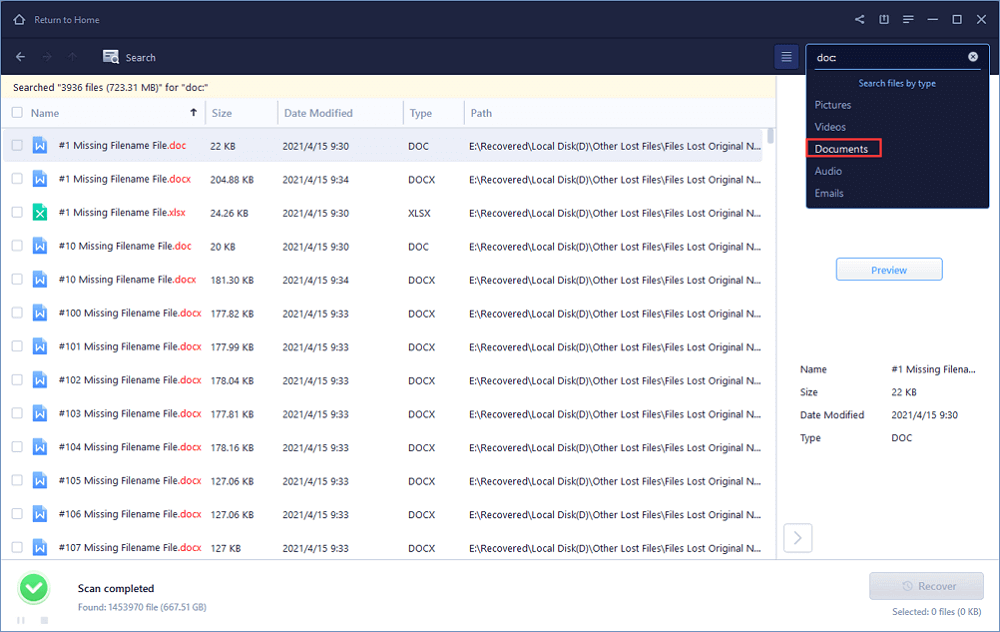- Onenote Notes Missing
- Missing Notebooks Onenote
- Missing Notebook In Onenote
- Missing Onenote Notebook Templates
- Missing Onenote Notebook Download
Recently, a customer I work with asked me to investigate why the tabs in their shared OneNote notebooks were disappearing. It is especially prevalent when they moved to OneNote 2016. The cause as it turned out was something called Windows Deduplication. At its simplest, it is a way to reduduplicate files and similar streams of data on a disk. It is a form of compression at its simplest which is to say it is a mechanism to allow you to stick more stuff on a computer or server disk. What we found was the deduplication was corrupting the OneNote index (toc) on the server and each time someone went to make changes to the OneNote file on the server. Tabs would start disappearing for other users when multiple users were editing the files. When we enabled the exception for OneNote files in the data deduplication feature and then moved the OneNote files from one folder to another and then back (which is required to de-optimize the files), the problem went away. To resolve this problem you will likely need your administrator involved:
- You will need to set an exception for the OneNote file extensions in Windows Server 2012 Data Deduplication.
- Here are some details on configuring that with PowerShell. See the “Modifying Data Deduplication volume-wide settings” section.
- You will need to exclude these extensions: *.one, *.onebin, *.onetoc2
- Next, have everyone close OneNote on their systems.
- Finally, you will need to “deoptimize” (or, and I love this, de-dedup) the files. To do this, you will create a folder somewhere in the shared folder, move all the files in the OneNote folder to that location, then move them back.
Hi, Wi-Fi missing in my HP Notebook(Laptop) after a Windows 10 update. Version 10.0.14393 installed in my laptop. I have tried installing latest wireless drivers and various other solutions with no. Sync Notebooks Manually. Let’s understand how OneNote syncs by default. As you add new notes.
Yes, you can share OneNote notebooks with externals – provided you share it to them using a link. When you add a OneNote to Teams private chats or chatgroups there is a handy + (add a new tab) that can be used to add a notebook (among other things). However, + is missing from meetings so this is a bit more complicated.
NOTE: Nothing needs to be done on the clients, they will just work the next time the users launch OneNote. You might notice the tabs will still initially appear to be missing, but they will re-index and come back. This might take a few minutes depending on how many tabs there are.
Once completed, you should find that your tabs are no longer disappearing.
 -->
-->Applies to: Consumer notebooks on OneDrive | Enterprise notebooks on Microsoft 365
To create a OneNote page, you send a POST request to a pages endpoint. For example:
POST ../notes/sections/{id}/pages
Send the HTML that defines the page in the message body. If the request is successful, Microsoft Graph returns a 201 HTTP status code.
Note:To learn about the POST requests you can send to create sections, section groups, and notebooks, see our interactive REST reference.
Construct the request URI
To construct the POST request URI, start with the service root URL:
https://graph.microsoft.com/v1.0/me/onenote

Then append the pages endpoint:
Create a page in any section (specified by section name)
.../pages?sectionName=DefaultSectionCreate a page in any section (specified by ID)
.../sections/{section-id}/pages
If you're creating pages in the user's personal notebook, Microsoft Graph also provides endpoints you can use to create pages in the default notebook:
- Create a page in the default section of the default notebook
../pages
Your full request URI will look like one of these examples:
https://graph.microsoft.com/v1.0/me/onenote/sections/{id}/pageshttps://graph.microsoft.com/v1.0/me/onenote/pages?sectionName=Homework
Learn more about the service root URL.
Using the sectionName URL parameter
The following rules apply when using the sectionName parameter to create a page in a named section in the default notebook:
Only top-level sections can be referenced (not sections within section groups).
If a section with the specified name doesn't exist in the default notebook, the API creates it. These characters are not allowed for section names:
? * / : < > | & # ' % ~Section names are case-insensitive for matching, but case is preserved when sections are created. So 'My New Section' will display like that, but 'my new section' would also match on subsequent posts.
Section names must be URL-encoded. For example, spaces must be encoded as %20.
The sectionName parameter is valid only with the
../notes/pagesroute (not../notes/sections/{id}/pages).
Because sections are created if they don't exist, it's safe to use this call with every page your app creates. Users might rename sections, but the API will create a new section with the section name that you supply.
Note:The links returned by the API for pages in a renamed section will still reach those older pages.
Construct the message body
The HTML that defines page content is called input HTML. Input HTML supports a subset of standard HTML and CSS, with the addition of custom attributes. (Custom attributes, like data-id and data-render-src, are described in Input and output HTML.)
Send the input HTML in the message body of the POST request. You can send the input HTML directly in the message body using the application/xhtml+xml or text/html content type, or you can send it in the 'Presentation' part of a multipart request.
The following example sends the input HTML directly in the message body.
Onenote Notes Missing
If you're sending binary data, you must use a multipart request.
Note:To simplify programming and consistency in your app, you can use multipart requests to create all pages. It's a good idea to use a library to construct multipart messages. This reduces the risk of creating malformed payloads.
Requirements and limitations for input HTML in POST pages requests
When sending input HTML, be aware of these general requirements and limitations:
Input HTML should be UTF-8 encoded and well-formed XHTML. All container start tags require matching closing tags. All attribute values must be surrounded by double- or single-quote marks.
JavaScript code, included files, and CSS are removed.
HTML forms are removed in their entirety.
Microsoft Graph supports a subset of HTML elements.
Microsoft Graph supports a subset of common HTML attributes and a set of custom attributes, such as the data-id attribute used for updating pages. For supported attributes, see Input and output HTML.
Supported HTML and CSS for OneNote pages
Not all elements, attributes, and properties are supported (in HTML4, XHTML, CSS, HTML5, etc.). Instead, Microsoft Graph accepts a limited set of HTML that better fits how people use OneNote. For more information, see HTML tag support for pages. If a tag's not listed there, it'll probably be ignored.
Missing Notebooks Onenote
The following list shows the basic element types that Microsoft Graph supports:
<head>and<body><title>and<meta>that set the page title and creation date<h1>through<h6>for section headings<p>for paragraphs<ul>,<ol>, and<li>for lists and list items<table>,<tr>and<td>, including nested tables<pre>for preformatted text (preserves white space and line breaks)<b>and<i>for bold and italic character styles
Microsoft Graph preserves the semantic content and basic structure of the input HTML when it creates pages, but it converts the input HTML to use the supported set of HTML and CSS. Features that don't exist in OneNote have nothing to be translated to, so they might not be recognized in the source HTML.
Example request
This example multipart request creates a page that contains images and an embedded file. The required Presentation part contains the input HTML that defines the page. The imageBlock1 part contains the binary image data, and fileBlock1 contains the binary file data. Data parts can also contain HTML, in which case Microsoft Graph renders the HTML as an image on the OneNote page.
For more examples that show how to create pages that contain images and other files, see Add images and files, our tutorials, and our samples. Also, learn how to create absolute positioned elements, use note tags, and extract data for business card captures and online recipe and product listings.
Microsoft Graph is strict about some formats, such as CRLF newlines in a multipart message body. To reduce the risk of creating malformed payloads, you should use a library to construct multipart messages.
If you do receive a 400 status for a malformed payload, check the formatting of newlines and whitespaces, and check for encoding issues. For example, try using charset=utf-8 (example: Content-Type: text/html; charset=utf-8).
See requirements and limitations for input HTML and size limits for POST requests.

Request and response information for POST pages requests
| Request data | Description |
|---|---|
| Protocol | All requests use the SSL/TLS HTTPS protocol. |
| Authorization header |
If missing or invalid, the request fails with a 401 status code. See Authentication and permissions. |
| Content-Type header |
Multipart requests are required when sending binary data, and use the |
| Accept header | application/json |
| Response data | Description |
|---|---|
| Success code | A 201 HTTP status code. |
| Response body | A OData representation of the new page in JSON format. |
| Errors | If the request fails, the API returns errors in the @api.diagnostics object in the response body. |
| Location header | The resource URL for the new page. |
| X-CorrelationId header | A GUID that uniquely identifies the request. You can use this value along with the value of the Date header when working with Microsoft support to troubleshoot issues. |
Constructing the Microsoft Graph service root URL
The Microsoft Graph service root URL uses the following format for all calls to Microsoft Graph:
https://graph.microsoft.com/{version}/me/onenote/
The version segment in the URL represents the version of Microsoft Graph that you want to use. Use v1.0 for stable production code. Use beta to try out a feature that's in development. Features and functionality in beta may change, so you shouldn't use it in your production code.

Use me for OneNote content that the current user can access (owned and shared). Use users/{id} for OneNote content that the specified user (in the URL) has shared with the current user. Use Microsoft Graph to get user IDs.
OneNote section size limitations
There is a limit to the number of pages that you can add to a section using the OneNote API. When this limit is reached for a section and an attempt is made to create a new page in that section, you will see a response with HTTP status code 507 and message 'Exceeded the maximum number of pages allowed per section'. For more information about this error code, see OneNote error codes.
You can use one of the following workarounds:
Missing Notebook In Onenote
- Create a new section and add new pages there.
- Delete unused pages of an existing section that has reached the page limit.
Permissions
To create OneNote pages, you'll need to request appropriate permissions. Choose the lowest level of permissions that your app needs to do its work.
Missing Onenote Notebook Templates
Choose from:
Missing Onenote Notebook Download
- Notes.Create
- Notes.ReadWrite
- Notes.ReadWrite.All
For more information about permission scopes and how they work, see Microsoft Graph permissions reference.
See also
